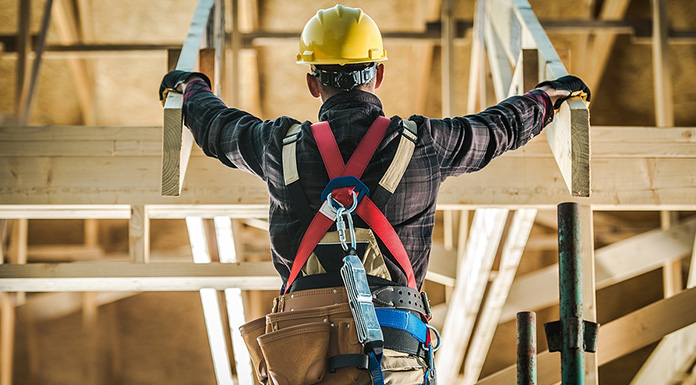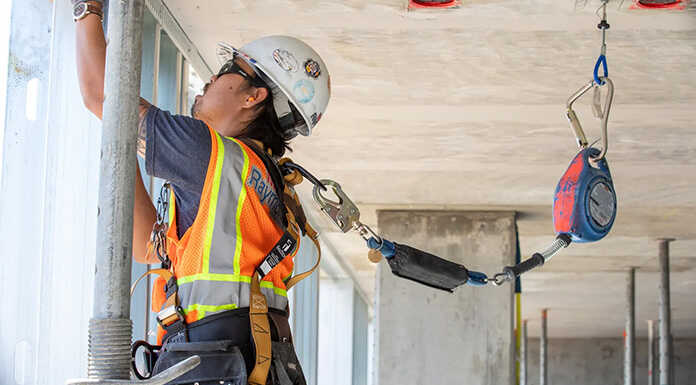As the days get longer and the weather warmer, construction activity increases. This is a common time for self-retracting lifelines (SRL) to come out of storage to prepare for use.
A self-retracting lifeline is an important part of construction safety. It is a fall-prevention device that contains a drum-wound line (usually a cable or nylon line) that allows a user to move freely with the line extending and retracting when moving in a typical fashion. However, the line will automatically lock-up at the onset of a fall due to the design of its internal ratcheting system.
Self-retracting lifelines are generally designed for fall restraint applications only and not fall arrest situations. The manufacturer sets the circumstances of use. Use the device according to the manufacturer’s instructions.
Self-retracting lifelines should generally not be used with a separate lanyard. Only components integral to the device should be used in connection to the user’s harness/D-ring.
Each SLR needs to be inspected by a competent person annually. A good time to do this is when you take an SLR out of storage. The Occupational Safety and Health Administration defines “competent person” as: one who is capable of identifying existing and predictable conditions in the surroundings and work areas which are unsanitary, hazardous or dangerous and who is authorized to take prompt corrective action.
Before the inspection takes place, here are some considerations:
- Was the unit stored in a manner to prevent damage and in a cool, clean environment, away from direct sunlight?
- Is the weight of the intended user(s) within the unit’s rating?
- Is the label still attached and legible?
- The housing should be cleaned with water and mild detergent.
Inspections are to be performed per the manufacturer’s instructions. When performing the inspection, here are some items to be examined:
- Ensure that there are no loose screws or bent and damaged components.
- Ensure that swivel eyes turn freely.
- Make sure that the line extends fully and retracts without hesitation.
- Examine the line when it’s fully extended. Ensure that the line is not frayed or otherwise damaged.
- Ensure that the line/drum locks up when jerked tight.
- Make sure that any connecting hooks and/or carabiners are not bent and free of damage.
- Ensure that connecting hooks and/or carabiners lock up tight.

Document the inspection process. Record the date of the inspection, the device inspected, and the person doing the inspection.
If damage is detected, do not disassemble and attempt to repair the unit. Only those authorized by the manufacturer should attempt to perform any repairs to the device.
In addition to the annual inspection by a competent person, an SLR must be inspected by the user at the start of each work shift. At the end of the work shift, the device should be stored so it will not suffer damage.
Only personnel trained in the proper use of an SLR, and trained in its inclusion with other components (such as an anchorage point and body harness) in a complete fall prevention system, should be allowed to use the device.
Fall prevention is an important component of safety, and the proper use of a self-retracting lifeline is essential in a fall prevention system. Proper storage, inspection, and use of a self-retracting lifeline can help ensure that proper fall prevention measures are in place.

















